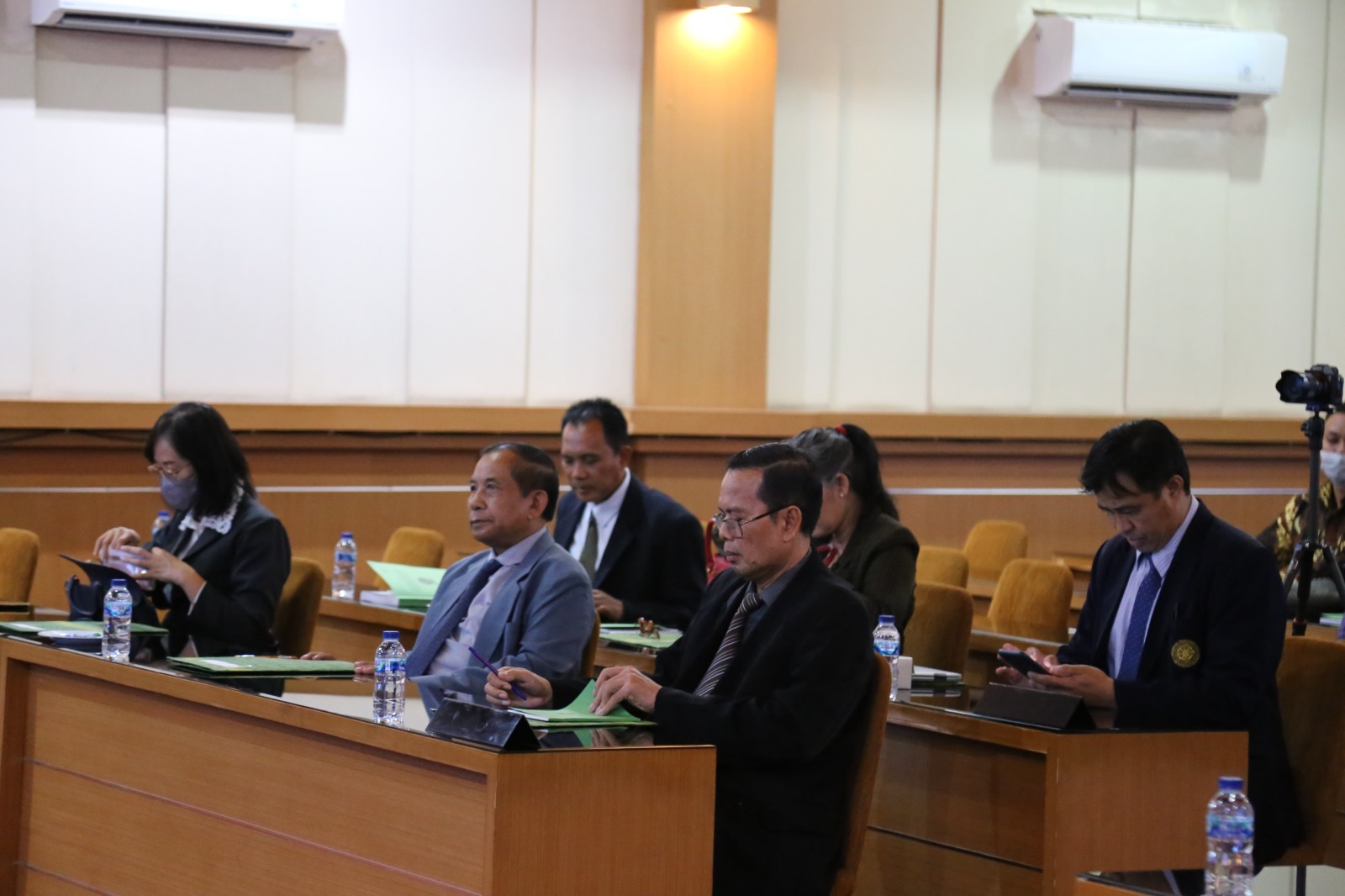Audio Hypnotherapy Utilizing Local Culture Can Improve the Quality of Life of Hemodialysis Patients
Audio Hypnotherapy Utilizing Local Culture Can Improve the Quality of Life of Hemodialysis Patients
Located in the Postgraduate Meeting Room Lt III, Denpasar Postgraduate Building, a Doctoral Promotion examination was held with promovendus candidate Ns. Putu Agus Ariana, S.Kep., M.Si, with the dissertation title "Rindik Bali Audio Hypnotherapy Model Based on Health Belief Model and Mindfulness Reduces Heart Rate Variability, Insomnia Index and Quality of Life of Chronic Kidney Failure Patients in the Hemodialysis Room of Kertha Usada Hospital Singaraja ." (14/3/2023)
Chronic Kidney Failure (CKD) patients undergo hemodialysis for the rest of their lives. Based on the literature study conducted, there are several impacts that occur on patients such as burnout in undergoing therapy, stress, insomnia and ultimately have an impact on decreasing quality of life. An effort is needed to provide optimal service to hemodialysis patients. This model is called the Rindik Bali Audio Hypnotherapy Model, where the development of this model is based on HBM and Mindfulness. This model is used as an intervention to reduce HRV, reduce insomnia index and improve the quality of life of patients undergoing regular hemodialysis.
This research is a mixed method research. The first stage was model development and followed by qualitative research to explore perceptions of using the model. The second phase of the research was carried out using a true experimental design on 180 samples. Then the sample was divided into three groups, namely the intervention group 1 which was given the Rindik Bali Audio Hypnotherapy Model (MAHRB), the intervention group 2 which was given conventional relaxation music, and the control group. The findings in the initial measurement in the three groups experienced problems with stress, insomnia and quality of life.
The Rindik Bali Audio Hypnotherapy Model significantly influences HRV, Insomnia Index and Quality of Life of patients undergoing regular hemodialysis, both qualitatively and quantitatively. The results of the analysis carried out in a qualitative research on perception using the Rindik Bali Audio Hypnotherapy Model show that patients have perceptions, namely expression of feelings, cultural therapy, positive thoughts and self-acceptance. Based on the analysis of the Bali Rindik Hypnotherapy Audio Model on HRV, insomnia index and quality of life. It is proven that this model has a significant effect on HRV (p value = 0.040), significant on the insomnia index (p value = 0.001) and significant on quality of life in all domains (p value = 0.001). Based on the results of the Post Hoc test, it was found that the decrease in HRV, the decrease in the insomnia index and the increase in quality of life were better in the group given MAHRB. Thus, the HBM and Mindfulness-based Audio Hypnotherapy Model is better for reducing HRV, Insomnia Index and increasing Quality of Life compared to conventional relaxation methods and regular hemodialysis therapy without relaxation.
The novelty of this research is the formulation of MAHRB based on HBM and Mindfulness, which aims to reduce HRV, reduce insomnia index and improve the quality of life of patients undergoing hemodialysis. This model is relevant and can be applied when a patient is undergoing hemodialysis therapy. The use of MAHRB strengthens the Mindfulness theory on the Acceptance without Judgment dimension and strengthens the HBM Theory on all dimensions, especially on Perceived Benefits and Perceived Barriers in patients undergoing Hemodialysis.
The implications of the results of this study are a decrease in the HRV value, reduce the insomnia index and improve the quality of life in patients undergoing hemodialysis, so that the focus on patient care is holistic. The results of the research that has been done show that the Rindik Bali Audio Hypnotherapy Model based on HBM and Mindfulness can be a program that can be considered as a method to improve the quality of service for patients undergoing hemodialysis therapy. Based on the results of this study, it can be suggested for the hospital as a provider of hemodialysis services to improve the optimal quality of hospital services. Suggestions for further research are expected to carry out further research with other variable objective indicators.
The exam was led by the Vice Dean for Academic Affairs and Planning, FK Unud, Dr. dr. I Gede Eka Wiratnaya. Sp.OT.(K) with the testing team:
1. dr. I Made Ady Wirawan, S.Ked, MPH., Ph.D (Promoter)
2.Dr. dr. Dyah Pradnyaparamita Duarsa, M.Si (Co-promoter I)
3.Dr. dr. Cokorda Bagus Jaya Lesmana, S.Ked., Sp.KJ(K), MARS (Co-promoter II)
4. Dr. dr. I Made Jawi, M. Kes
5. Prof. dr. Pande Putu Januraga, M.Kes., Dr.PH
6. Dr. dr. A.A Ngurah Subawa, M.Sc
7.Dr. dr. I Made Sudarmaja, M. Kes
8.Dr. dr. Ida Ayu Ika Wahyuniari, S.Ked., M.Kes
9.Dr. Luh Seri Ani, SKM., M.Kes
10.Dr. dr. I Made Muliarta, S.Ked., M.Kes
As for invitations academic are:
1.Dr. dr. Gede Wirya Kusuma Duarsa, M.Kes, Sp.U(K)
2.Dr. Dr. dr. Anak Ayu Sri Wahyuni, Sp.KJ
3.Dr. dr. I Putu Eka Widyadharma, M.Sc., Sp.S(K)
4.Dr. Ns. I Made Sundayana, S.Kep., M.Sc
5.Dr. Bdn. Ketut Novia Arini, S.ST, M.Kes
In this exam, Dr. Ns. Putu Agus Ariana, S.Kep., M.Si, was declared to have passed as the 372nd Graduate Doctor of the Doctoral Degree in Medical Sciences, Faculty of Medicine, Udayana University with the title of VERY SATISFACTORY.









